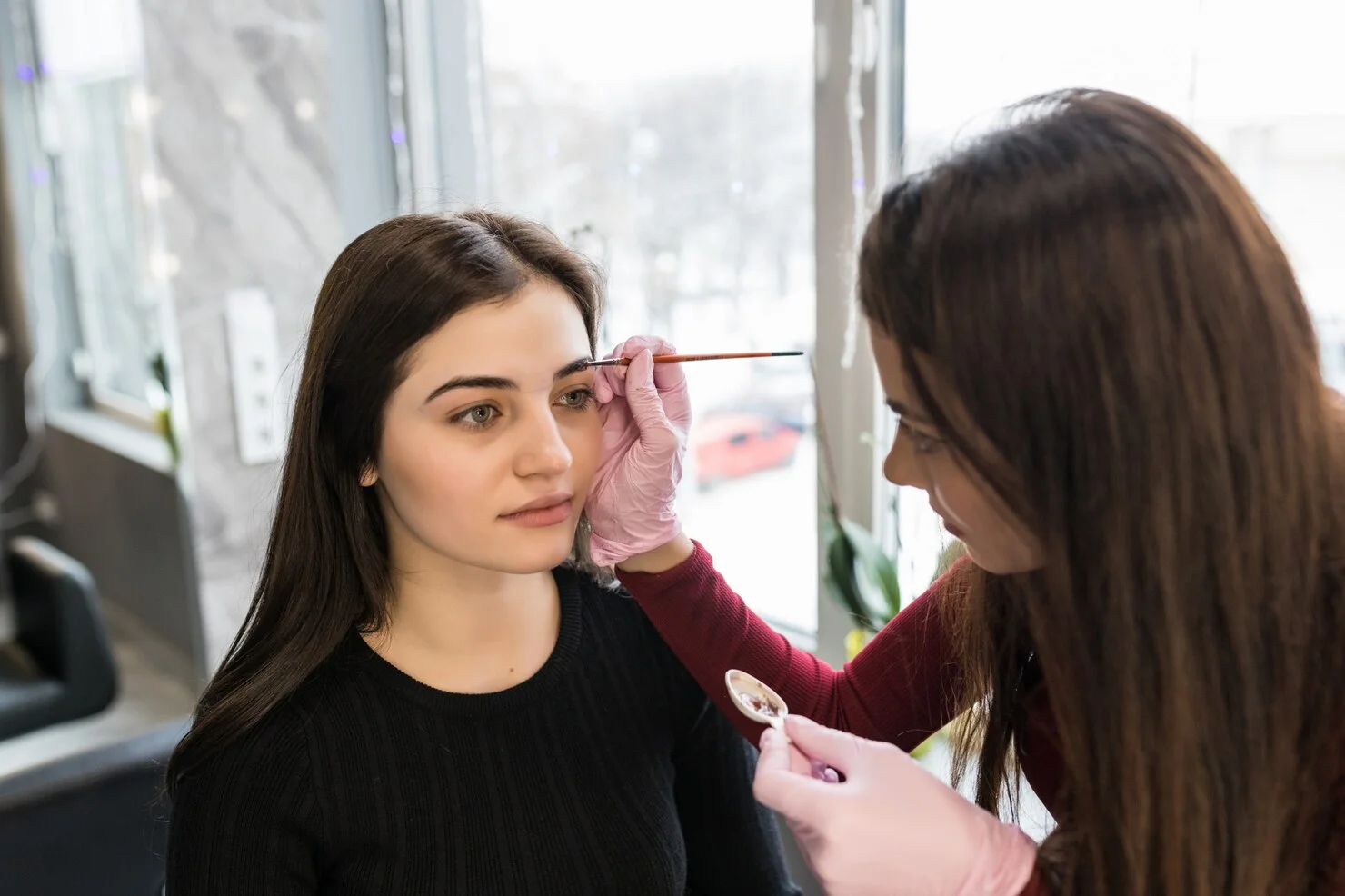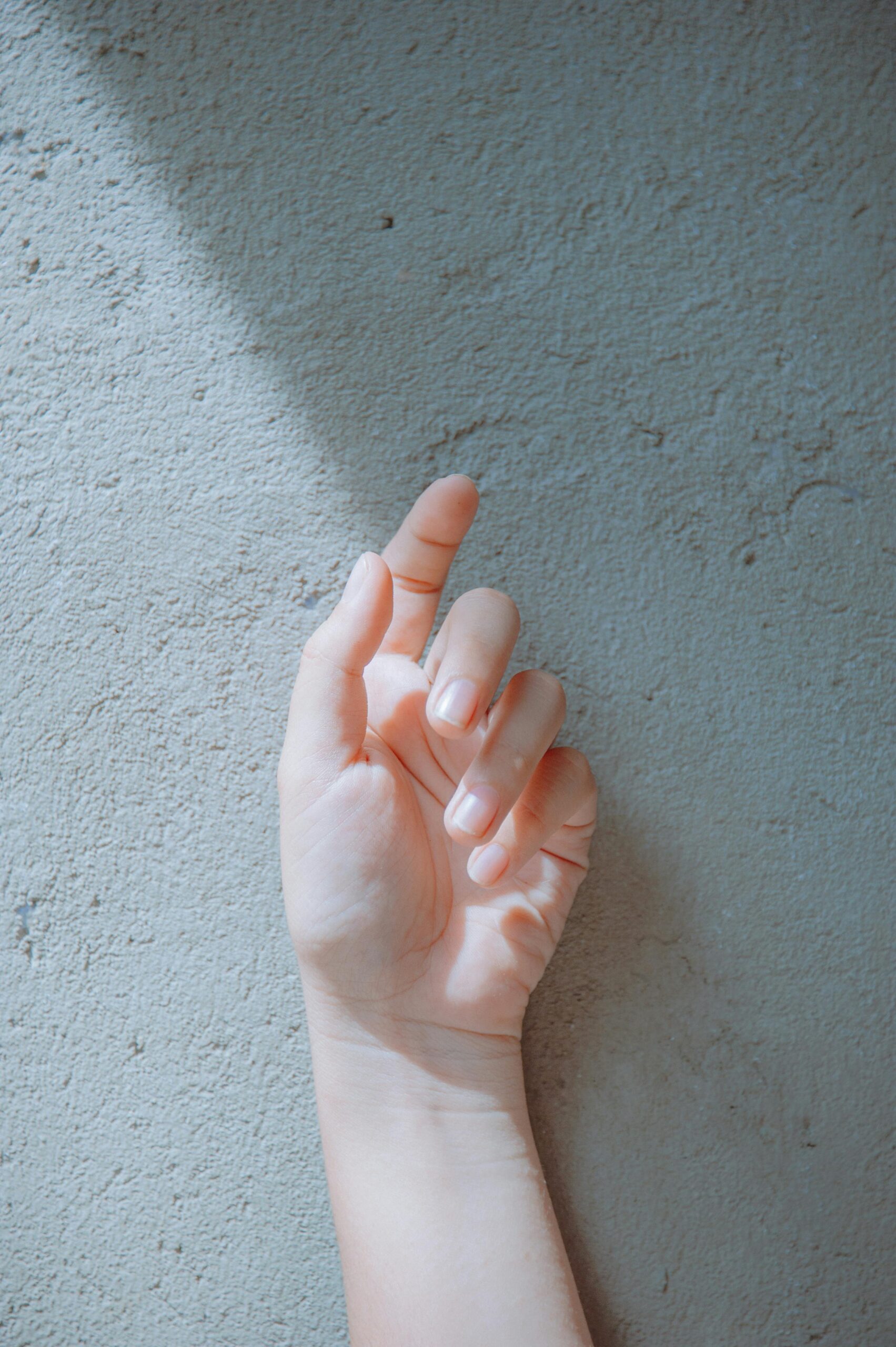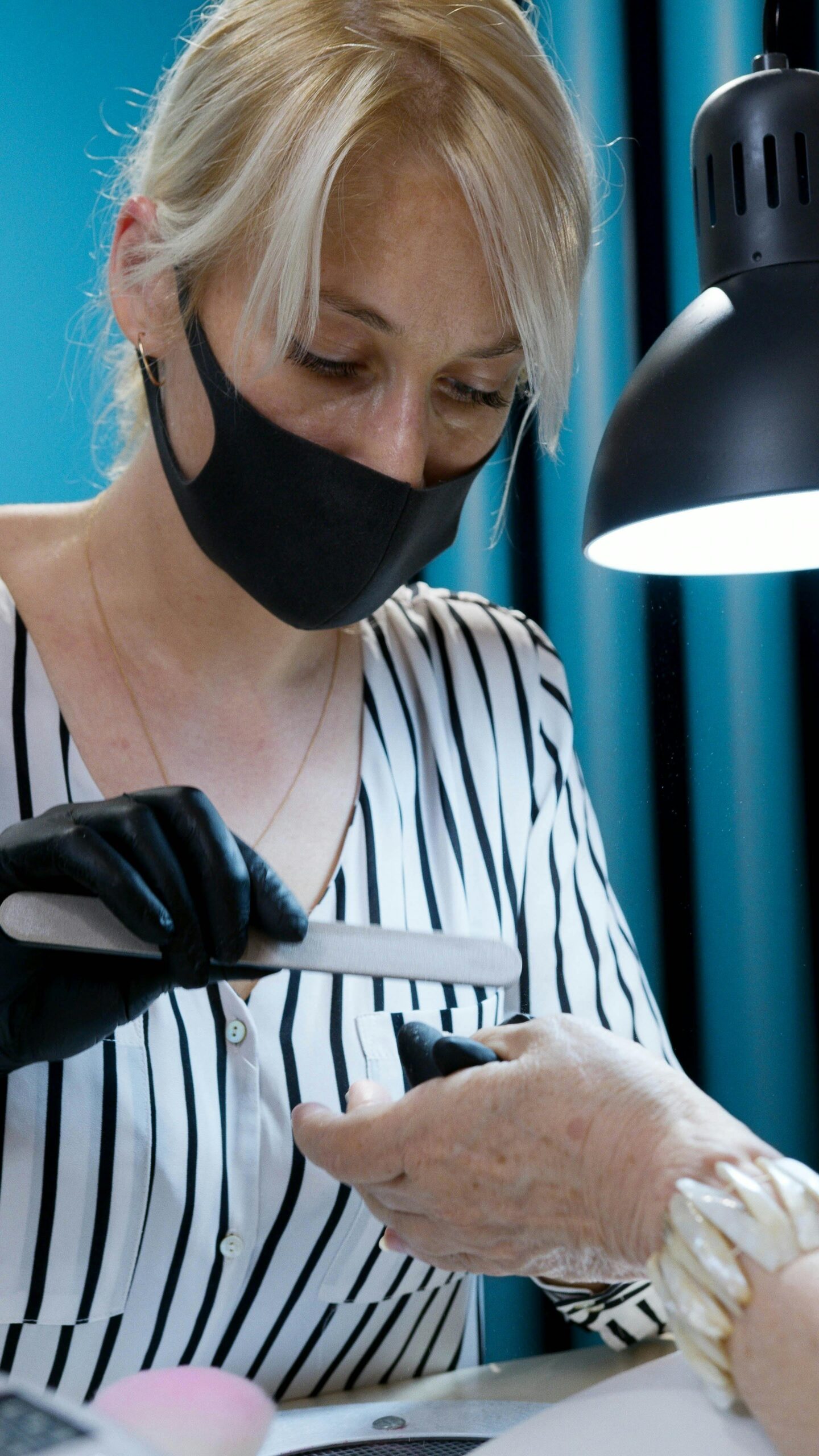BEAUTY
How to Choose the Right Eyelash Extension Adhesive

Eyelash extensions have become an essential beauty trend, offering a quick way to achieve long, voluminous lashes without the daily hassle of applying mascara or false lashes. However, the key to a successful and long-lasting eyelash extension application lies not only in the quality of the lashes but also in the adhesive used.
Choosing the right eyelash extension adhesive is crucial for both the longevity of the lashes and the health of the natural lashes. This guide will walk you through the essential factors to consider when selecting the perfect eyelash extension adhesive.
Understanding Eyelash Extension Adhesives
There are several types of eyelash extension adhesives available, each with its own unique properties. Understanding these variations can help you make an informed decision that suits your specific needs.
Drying Time
The drying time of an eyelash extension adhesive is one of the most important factors to consider. The time it takes for the adhesive to dry affects how quickly the extension can be applied and how well it adheres to the natural lash.
- Fast-Drying Adhesives: These are ideal for experienced lash technicians who can work quickly.
- Slow-Drying Adhesives: These are better suited for beginners or those who need more time to adjust the position of the lash extensions.
Retention Time
Retention time refers to how long the eyelash extension adhesive will hold the extension in place before it begins to weaken. A longer retention time means the lashes will stay intact for a more extended period, reducing the need for frequent touch-ups.
- High Retention Adhesives: These adhesives offer long-lasting hold, making them ideal for clients who want their extensions to last several weeks without requiring frequent maintenance.
- Moderate Retention Adhesives: These are suitable for clients who prefer a more natural look and may not mind coming in for touch-ups more regularly.
Viscosity
Viscosity refers to the thickness of the adhesive. The viscosity of the adhesive you choose will depend on the type of lash extensions you are applying and the technique you use.
- Low Viscosity Adhesives: These are thin and flow easily, making them ideal for creating a seamless bond between the natural lash and the extension.
- High Viscosity Adhesives: Thicker adhesives are better suited for volume lashes, where multiple extensions are applied to a single natural lash.
Fume Level
Eyelash businesses extension adhesives can emit fumes that may cause irritation to the eyes and the surrounding skin. Choosing an adhesive with the appropriate fume level is essential for ensuring client comfort and safety.
- Low-Fume Adhesives: These are ideal for clients with sensitive eyes or for use in settings where proper ventilation may be limited.
- Regular-Fume Adhesives: While these adhesives may emit more fumes, they often provide a stronger bond and longer retention time.
CColourEyelash extension adhesives are available in different colours, each serving a specific purpose.
- Clear Adhesives: Clear adhesives dry to a transparent finish, making them ideal for clients with lighter lashes or for creating a more natural look.
- Black Adhesives: Black adhesives dry to a dark finish, blending seamlessly with dark lashes and enhancing the overall look of the extensions.
Factors to Consider When Choosing an Adhesive
Now that you understand the different types of eyelash extension adhesives let’s delve into the factors you should consider when making your choice.
Client’s Sensitivity
One of the first things to consider is your client’s sensitivity to adhesives. Some clients may have sensitive eyes or skin, which can react negatively to certain adhesives. In such cases, opting for a low-fume, hypoallergenic adhesive can help prevent irritation and ensure a comfortable experience.
Climate and Humidity
The environment in which you apply the lashes can significantly affect the performance of the adhesive. Adhesives react differently depending on the level of humidity and temperature.
- High Humidity: In humid environments, adhesives tend to dry faster, which might require using a slower-drying adhesive to allow for more precise application.
- Low Humidity: In dry climates, the adhesive may take longer to dry, so a faster-drying adhesive might be more appropriate to speed up the application process.
Application Technique
Your technique and speed as a lash technician play a crucial role in determining the right adhesive. If you are confident and quick, a fast-drying adhesive will complement your skills. On the other hand, if you are still perfecting your technique, a slower-drying adhesive might be more forgiving and allow you to make adjustments during the application.
Lash Style
The style of lash extensions you are creating will also influence your choice of adhesive. For example, a thick, high-viscosity adhesive works well for volume lashes, while a thin, low-viscosity adhesive is better suited for classic lashes.
Safety and Allergies
Safety should always be your top priority. Make sure the adhesive you choose is made from high-quality, medical-grade ingredients. Additionally, conducting a patch test before the full application can help identify any potential allergic reactions and ensure the adhesive is safe for use on your client.
Best Practices for Using Eyelash Extension Adhesives
To get the most out of your eyelash extension adhesive, follow these best practices:
Proper Storage
Store your adhesive in a cool, dry place away from direct sunlight. Make sure to keep the cap tightly sealed when not in use to prevent exposure to air, which can cause the adhesive to dry out or lose its effectiveness.
Shaking the Bottle
Before each use, shake the adhesive bottle thoroughly to ensure that the ingredients are well-mixed. This helps maintain the adhesive’s consistency and effectiveness throughout the application process.
Use in a Well-Ventilated Area
Always apply eyelash extensions in a well-ventilated area to minimise exposure to fumes. Proper ventilation helps ensure a comfortable experience for both the technician and the client.
Replace Regularly
Eyelash extension adhesives have a limited shelf life, typically ranging from one to three months after opening. Replace your adhesive regularly to ensure optimal performance and avoid using expired products, which may compromise the bond’s strength and longevity.
Conclusion
Choosing the right eyelash extension adhesive is crucial for achieving a flawless, long-lasting lash application. By considering factors such as drying time, retention, viscosity, fume level, and colour, you can select an adhesive that best suits your needs and enhances the overall client experience. Remember, the key to a successful lash application is not just in the adhesive you choose but also in how you use it.
BEAUTY
How to have a romantic wedding ceremony in Los Angeles

A wedding in Los Angeles is a dream for many couples, a romantic event that can be arranged in a city offering many possibilities, from a choice of beautiful locations with ocean views, the city, or the mountains to simply cozy little wedding chapels in Los Angeles, where you can create an intimate atmosphere for an unforgettable wedding ceremony.
Contact Lucky Wedding Day Chapel, and you are guaranteed to make your wedding day special. Here, you can think through all the details and create the perfect atmosphere with decorations, musical accompaniment, and a florist. The secret to a romantic wedding ceremony lies primarily in choosing the right location, the place that is right for you. It is not necessary to choose large luxurious halls; you can opt for a small wedding chapel where you can customize everything to suit your chosen wedding concept.
Wedding Chapel Los Angeles
The city offers small wedding chapels with classic interiors or modern halls with minimalist designs, so you can choose based on your taste and preferences. Outdoor locations are also very popular for wedding ceremonies, offering you and your guests beautiful views of the ocean or, if you prefer, the mountains and cityscapes. Each location allows you to create a special atmosphere and adapt it to your individual desires. By contacting Lucky Wedding Day Chapel, you can count on an individual approach and a cozy wedding ceremony where everything will be done just the way you want it. Small decorative elements, string music—you can choose everything based on your wishes.
Special attention should be paid to the musical accompaniment, because if it is chosen correctly, it will set the mood for the entire wedding ceremony. The songs for the first dance or the background music at the moment when you say “I do” will remain in your memory forever, and this emotional moment will stay with you throughout your marriage.Not only music, but also the work of a photographer is important, as well as flower decorations and other details. All these moments and your wishes for organizing a wedding can be realized at Lucky Wedding Day, which will offer you a beautiful and atmospheric chapel wedding ceremony in Los Angeles depending on your wishes, for a small circle of guests, or just for the two of you. Lucky Wedding Day Chapel has everything you need for the perfect wedding ceremony.
BEAUTY
Celestial Skin: Traces of Light and Lasting Grace

Beauty, much like the cosmos, is not defined by speed but by rhythm. While modern culture urges immediacy—instant solutions, quick treatments, overnight miracles—the skin resists such commands. It evolves through cycles, responding not to pressure but to patience. Just as stars form slowly in distant galaxies, each act of self-care builds quietly until the result becomes undeniable. In this journey, the orbit of beauty is not a straight line but a continuous path circling through time, where discipline and consistency are the forces that hold everything together.
Across history, cultures revered beauty as something sacred rather than superficial. In ancient temples, minerals were ground into powders to protect and adorn; in royal courts, oils infused with herbs preserved vitality. None of these practices promised immediacy—they reflected respect for balance. Modern skincare, despite its technology and packaging, tells the same truth: there is no shortcut to resilience. Every application is a signal to the body, a reminder that strength is built gradually. What matters most is not intensity but endurance, a principle as old as the heavens themselves.
Science today echoes this ancient wisdom. Skin cells renew in cycles of weeks, hydration requires daily replenishment, and environmental protection is cumulative. Quick results may create illusion, but deep change is written only through repetition. Think of it as layering light: one beam is weak, but thousands together illuminate a sky. Skincare works the same way. Every product used, every habit repeated adds to brightness, creating the spark that grows steadily into a visible presence.
The metaphors of culture remind us of the same principle. Stories rarely glorify sudden perfection; they celebrate arcs of growth. Heroes, artists, innovators—none arrive fully formed. They emerge through persistence. Beauty reflects this arc. It is not defined by a single mask, a single treatment, or a single choice, but by the thousands of repetitions that create identity. It is the story of patience written on the surface, a narrative that becomes stronger with every chapter.
Nature, as always, provides the purest lesson. Planets orbit steadily for millennia, oceans rise and fall with the moon, and forests grow layer upon layer after storms. None of this is immediate, but all of it is enduring. Skin follows the same law. Left to extremes, it falters; nurtured with care, it flourishes. The lesson is simple: beauty that endures is beauty in rhythm with time. When aligned with that rhythm, we embody the aura, a glow that is not manufactured but revealed—an elegance that transcends trend and becomes part of who we are.
What we learn is that beauty is celestial in nature—quiet, patient, luminous. It is not a finish line, but a constellation of choices that map our story. Each trace of light is a reflection of consistency. Each layer of care is a star in its own orbit. And together they form something vast, radiant, and unshakable: not just appearance, but grace that lasts beyond measure.
BEAUTY
Why Russian Manicure Is the New Beauty Standard in Austin

Nail trends in Austin are moving far beyond simple polish application. More women are asking for beauty services that are healthier, longer lasting, and more elegant. One service that is becoming extremely popular is the Russian e-file manicure. This technique, which originated in Europe, is now winning the hearts of beauty lovers in Texas because of its precision and long-term results.
Unlike a regular manicure where cuticles are clipped with scissors, the Russian method uses professional electric files with fine attachments. These tools allow a nail technician to clean the cuticle area with amazing accuracy, without damaging the skin or the nail plate. The surface becomes perfectly smooth and ready for gel application, which means polish adheres better and stays flawless much longer.
Many clients in Austin say that after trying this manicure once, they finally noticed the difference. Traditional manicures often cause small cuts or leave the nail uneven, which leads to chipping and early lifting of gel. With the Russian e-file manicure, the nail grows out cleanly, polish does not peel at the edges, and the overall look stays neat for weeks.
Another major advantage is safety. The e-file technique allows careful removal of only dead cuticle tissue, so the living skin remains healthy and protected. This reduces the risk of irritation and keeps nails stronger. It is a gentle approach that provides a professional finish while maintaining natural nail health.
The service is also perfect for women with busy schedules. In Austin, where many clients are professionals balancing work, family, and social life, it is important to have a manicure that lasts. With proper preparation, gel polish can stay intact for three to four weeks, saving both time and effort.
When it comes to style, the Russian e-file manicure offers endless possibilities. Because the base is prepared so thoroughly, any type of design looks better — from natural nude shades to bold colors or intricate nail art. Brides, influencers, and businesswomen alike appreciate how polished and sophisticated this technique looks in every situation.
If you are searching for the best place to try a Russian e-file manicure, visit ICON Beauty Clinic. The salon is known in Austin for combining advanced European methods with top safety standards. Every treatment is performed with sterile tools, professional products, and a high level of detail. The result is nails that are elegant, durable, and comfortable to wear.
Clients who experience the service often say they cannot go back to regular manicures. The difference in quality, appearance, and durability is clear. The Russian manicure is not just a beauty trend — it is a smarter, healthier way to care for nails.
As Austin continues to embrace international beauty innovations, this technique is setting new standards. Women who choose the Russian e-file manicure invest not only in beauty, but also in confidence and convenience.

 LIFESTYLE9 months ago
LIFESTYLE9 months agoThe Disciplinary Wives Club: Spanking for Love, Not Punishment

 ENTERTAINMENT1 month ago
ENTERTAINMENT1 month agoExploring the Kristen Archives: A Treasure Trove of Erotica and More

 BUSINESS9 months ago
BUSINESS9 months agoBrand Visibility with Imprint Now and Custom Poly Mailers

 HEALTH8 months ago
HEALTH8 months agoHappy Hippo Kratom Reviews: Read Before You Buy!

 GENERAL5 months ago
GENERAL5 months ago5 Factors That Affect Tattoo Removal Success

 HOME IMPROVEMENT9 months ago
HOME IMPROVEMENT9 months agoThe Do’s and Don’ts of Renting Rubbish Bins for Your Next Renovation

 TECHNOLOGY9 months ago
TECHNOLOGY9 months agoBlog Arcy Art: Where Architecture Meets Art

 BUSINESS10 months ago
BUSINESS10 months agoExploring the Benefits of Commercial Printing












